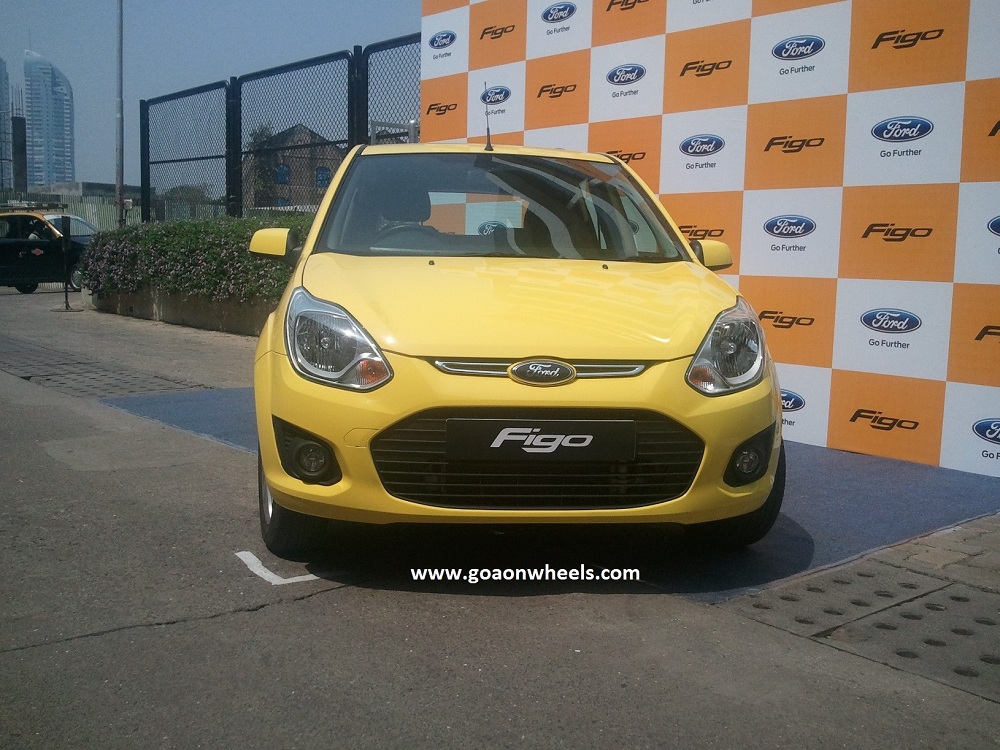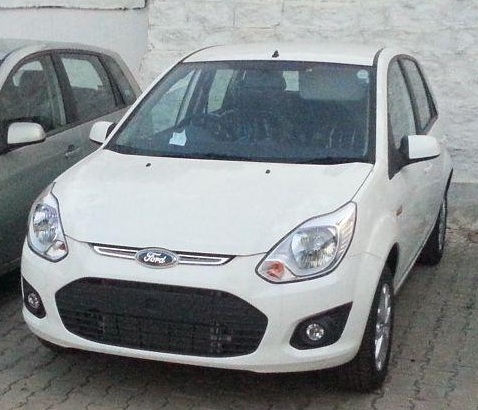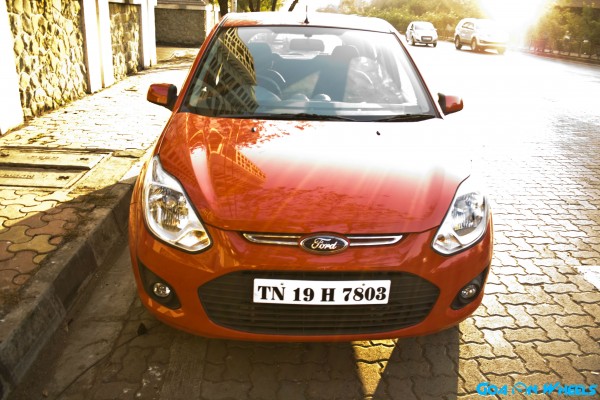
Picture Credits: Sambhav Khandelwal
Good Stuff:
- Sheer value for money
- Spacious interiors; can take five & their luggage for a month-long trip.
- Sturdy build quality; will withstand abuse
- Mature big-car-like stability and ride quality
- Outstanding driving dynamics and quick steering
- Excellent throttle response; negligible turbo-lag
Bad Stuff:
- No rear power-windows
- Uninspiring design; lacks the appeal of newer hatchbacks
- Engine lacks top-end grunt; doesn’t like to be revved beyond 3,500 rpm
- Ford’s inconsistent after-sales service
- Ground-clearance issues reported by existing owners
There is no questioning that the Ford Figo has been one of the most successful hatchbacks in the country. Launched in 2010, the car has sold over 2-lakh units and has single-handedly turned around Ford India’s fortunes. In an attempt to tackle its newer rivals, Ford had recently given the Figo a mid-life refresh. We drove it around Mumbai for a couple of days and here is what we think of it:
Exterior:
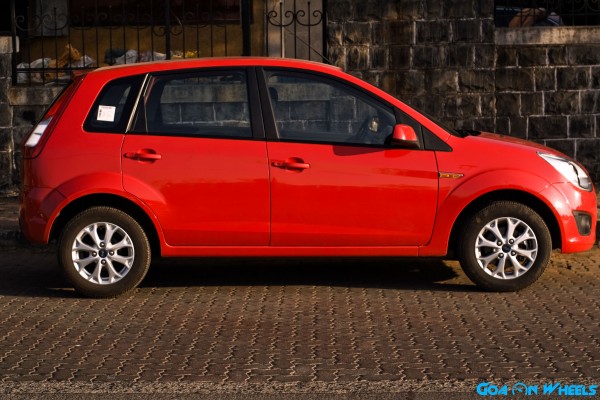
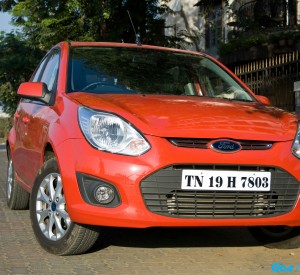
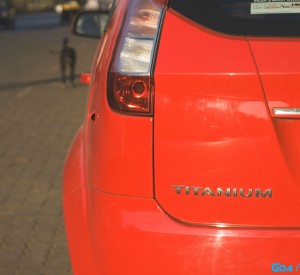
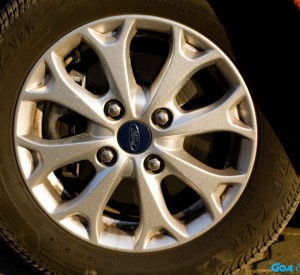
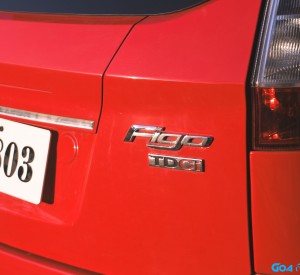
For a mass market car, such as the Figo, it’s important for the design to appeal to multiple demographics. Therefore, Ford has played it safe with the facelift and the changes to the exterior, though many are quite subtle. The revisions are more visible at the front and the Figo now carries a ‘Kinetic design’ theme like the other new-generation Fords. You get re-profiled headlamps, revised fog-lamp housings and a new hexagonal grille, which sort of resembles the one you’ll see on the soon-to-be-launched EcoSport.
The side-profile of the car remains un-touched, except for the new eight-spoke alloy wheels, which at first glance don’t look very different. The older design is still available as an option and the cheaper variants come with wheel hub-caps as standard. Apart from the new alloy wheels, the Figo is now also available in two new shades – Bright Yellow and Kinetic Blue. Ford had however, given us the old Colorado Red Figo for the drive and we think it suits the cars character the best. At the rear, the tail-lamp layout gets a slight re-arrangement and the cluster now comes with different graphics. You also get a slightly pronounced roof-spoiler which, in-all, sums-up the changes to the exterior.
Interior:
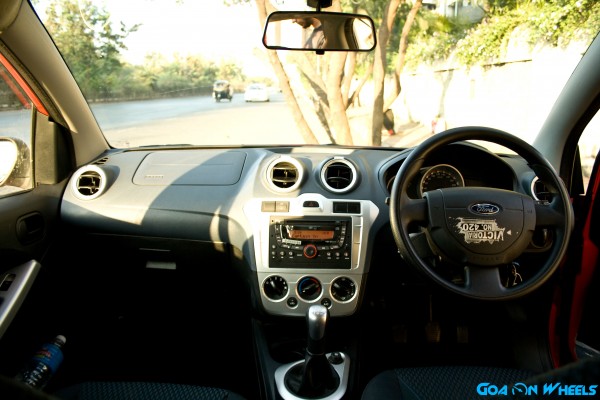
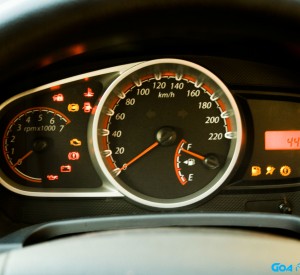
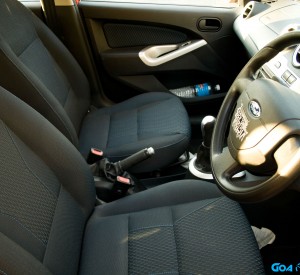
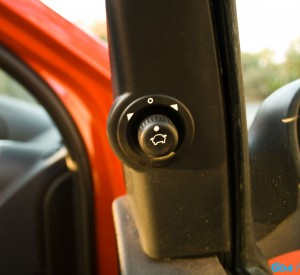
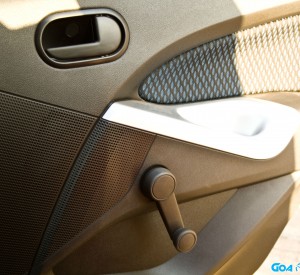
On the inside, Ford has ditched the gaudy Coral Red finish on top of the dash for a more eye-pleasing Riviera Blue. Like the pre-facelift Figo, the coloured dash is available as an option only on the top-end Titanium spec. We think it goes well with the seat-upholstery (also blue) and gives the interior a slight up-market feel, in comparison to the standard black dashboard. A welcome addition to the Figo’s equipment list is of the new steering-column mounted audio-controls. While their unusual placement takes a little getting used to, they are definitely a boon to use when driving.
The airiness of a car’s cabin largely depends on the space it has to offer, and the new Figo doesn’t disappoint on that front. You get ample space at the front and an exceptional travel range from the seats. The front passenger, in particular, has outstanding knee and leg room. I’m 5’10” and could completely stretch my legs. The driving position too is spot-on and while the driver’s seat height adjustment makes things easier for the shorter amongst us. Things at the rear bench too are more than just comfortable. You certainly won’t hear your passengers’ complaint of lack of space in the Figo. The only grouse we had at the rear was with the angle of the back-rest, which is slightly more upright for my liking and long distance travel could hence be cumbersome. This angle of the backrest however, frees up more cargo space, summing up to a best-in-class 294-litres of boot space.
Performance:
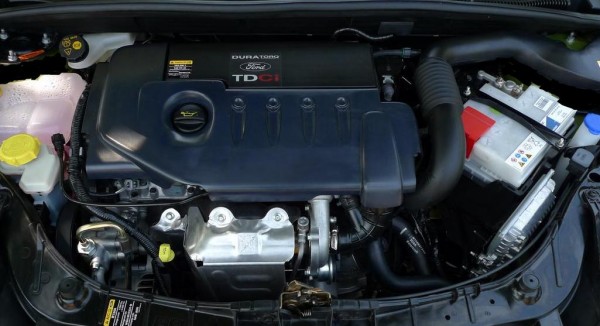 Mechanically, the Figo remains unchanged except that Ford claims it has improved the engine calibration of the Diesel variant. The 1.4 Litre DuraTORQ motor is a time-tested unit and generates 68 BHP @4,000 rpm and 160 NM of torque @ 2,000 rpm. What’s nice about this engine is that it’s quite responsive at low-speeds, all of which makes it well suited to humdrum city driving. You get absolutely no turbo-lag, an issue commonly associated with its Multijet powered rivals, and a nice spread of power in the mid-range. If there is an issue, it’s with the Figo’s top-end performance, as it gets noisy quite early in the rev-range and really coarse above the 4000 RPM mark.
Mechanically, the Figo remains unchanged except that Ford claims it has improved the engine calibration of the Diesel variant. The 1.4 Litre DuraTORQ motor is a time-tested unit and generates 68 BHP @4,000 rpm and 160 NM of torque @ 2,000 rpm. What’s nice about this engine is that it’s quite responsive at low-speeds, all of which makes it well suited to humdrum city driving. You get absolutely no turbo-lag, an issue commonly associated with its Multijet powered rivals, and a nice spread of power in the mid-range. If there is an issue, it’s with the Figo’s top-end performance, as it gets noisy quite early in the rev-range and really coarse above the 4000 RPM mark.
In terms of straight-line figures, the Figo does fairly well with a 0-100 kph time of 15.8 seconds. In-gear timings are impressive too, and the Ford does 20-80 kph in 13.55 seconds and 40-100 kph in 16.25 seconds. For the fuel-economy conscious, expect the Figo to return close to 12 kpl in city driving conditions and 16.3 kpl out on country roads. It’s a notch below than what you will get from the DDiS from Maruti but the figures are acceptable for its class.
Overall, the Figo performs extremely well in the city. Even with just 68 BHP of power on tap, the diesel-powered Ford feels quick enough for most regular car buyers. While the car will be fun on occasional sea-link blasts, you can’t escape the lack of top-end grunt from this engine. Nevertheless, first-time car buyers will be more than pleased with this baby-Ford. You’ll even enjoy using the extremely close-gated gearbox and its short-throw shifter. We didn’t experience a single missed shift throughout our drive and the gearbox has a very positive, slick and sure-slotting feel.
Ride, Handling & Braking:
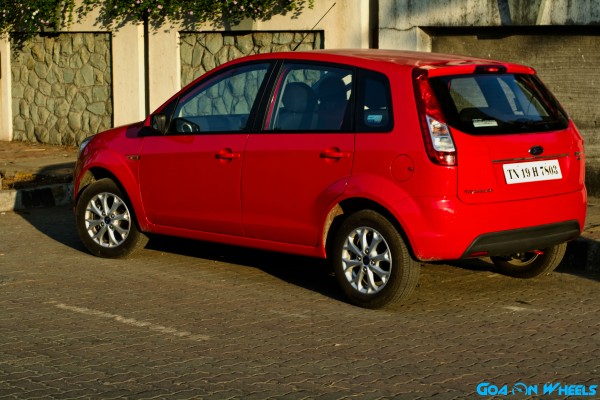 Ride and Handling has always been Ford’s forte and this trait now also extends to the Figo. The car handles exceptionally well and urges you to throw it around corners like a go-cart. With its responsive and nicely weighed steering, this is one car you would love to drive in the hills. The suspension behaviour is very mature too and the Figo offers the best balance between ride and handling. Sharper edges may tend to catch the Figo’s suspension out, yet it is very absorbent on most other surfaces.
Ride and Handling has always been Ford’s forte and this trait now also extends to the Figo. The car handles exceptionally well and urges you to throw it around corners like a go-cart. With its responsive and nicely weighed steering, this is one car you would love to drive in the hills. The suspension behaviour is very mature too and the Figo offers the best balance between ride and handling. Sharper edges may tend to catch the Figo’s suspension out, yet it is very absorbent on most other surfaces.
High-speed stability is akin to that of a premium sedan and the flimsy Toyota’s and Swift’s feel nowhere as composed as to what the Figo feels in a straight-line. At 120 kph, one would be on his toes in almost every other car, currently on sale. Not in the Figo. The hatchback begs for more power and stays extremely compliant on triple-digit speeds. With such a capable chassis, Ford could have easily upped the power output with this refresh.
In terms of braking, the Figo offers adequate bite at all times. The car comes equipped with ABS & EBD and we had no complaints with its performance what so ever.
Conclusion:
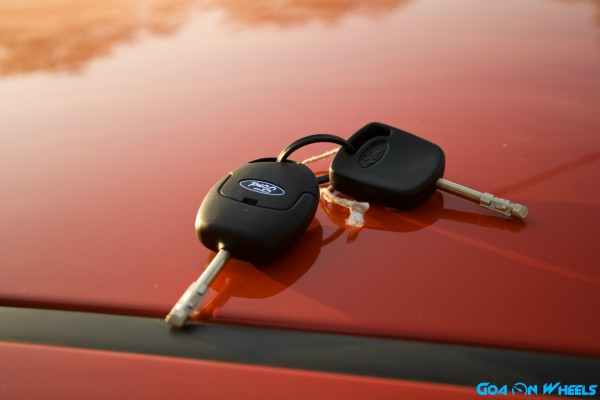 To sum it up, at a marginal premium of Rs 3000 – Rs 5000 across the range, the updated Ford Figo makes a great case for itself. While the looks may still not turn any heads, the noteworthy upgrades over the outgoing model has further enhanced the value for money proposition of the Figo. If you’re in the market for your first car, we would highly recommend you to consider the new Figo Diesel as an option. This is one car that ticks all the right boxes in the heart as well as the head. If only Ford had given it a slight power bump with this refresh.
To sum it up, at a marginal premium of Rs 3000 – Rs 5000 across the range, the updated Ford Figo makes a great case for itself. While the looks may still not turn any heads, the noteworthy upgrades over the outgoing model has further enhanced the value for money proposition of the Figo. If you’re in the market for your first car, we would highly recommend you to consider the new Figo Diesel as an option. This is one car that ticks all the right boxes in the heart as well as the head. If only Ford had given it a slight power bump with this refresh.
Pointers from our drive:
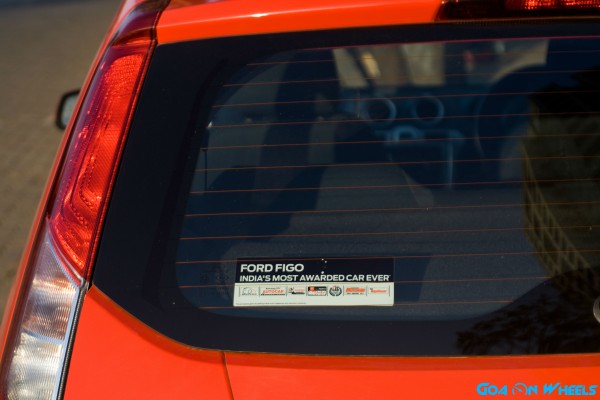 • Ford claims that the updated Figo has a quieter cabin, thanks to its “Double-bulb weather strips” on the doors. We can confirm this for you as our test-car was fairly silent on the inside.
• Ford claims that the updated Figo has a quieter cabin, thanks to its “Double-bulb weather strips” on the doors. We can confirm this for you as our test-car was fairly silent on the inside.
• A ground clearance of 168 mm, combined with a firm suspension, is sufficient for Indian roads. We didn’t scrape the underbelly anywhere, even on the speed-breakers that we missed spotting. According to ownership reports however, problems can be confronted if the cabin is fully occupied with the luggage compartment filled up.
• The dual-horns fitted to the Figo aren’t very confidence inspiring, thanks to their “small-car” sound. In a horn-oriented market such as ours, we would suggest you to upgrade it ASAP.
• The hatchback has a turning-circle radius of 4.9 meters. We tested the car in the most cramped areas of the city and found it to be more than adequate.
• The Figo comes equipped with speed-sensing auto-lock; the doors lock automatically once the speedo crosses 7 kph.
• Ford has also equipped the hatchback with a rapid deceleration warning system which flashes the hazards if you hit the brakes hard at over 96 km/h.
• The Figo’s air-con will chill you to your bones in no time; thanks to a 154cc compressor (some hatches use 80 – 90cc compressors).

